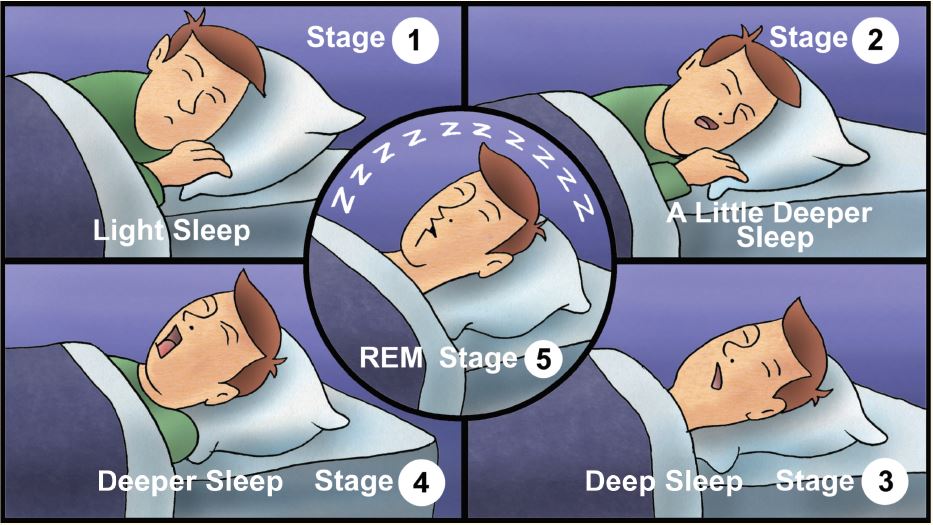Good morning! Did you wake singing, “Zippadee-doo-dah, zippadee-a; my, oh my, what a wonderful day”? A good night’s sleep can leave you feeling livelier, with a song in your heart. Plenty of sleep prepares you to be fit for duty. It’s a basic physiological need, like hunger or thirst, and is just as necessary for life. Getting quality sleep, in the right quantity, is imperative for maintaining good health and enjoying life fully.
The well-rested person spends about a third of their lives sleeping. That sounds like a lot of time. But when you realize that sleep deprivation in the short term can increase your risk for accidents, and in the long term can increase your risk for disease, we can all agree that time spent sleeping is a worthwhile investment. Sleep seems like a simple thing; we lie down, close our eyes, and go to sleep. It’s actually a highly complex, dynamic activity that involves numerous pathways through many parts of the brain. This article provides a brief overview of the mechanics of sleep to help you understand its importance.
There are two major types of sleep:
- Non-REM – quiet sleep
- REM (rapid eye movement) – dreaming sleep
In the non-REM phase, your brain is idling and your body continues to move, shifting position as you sink into deeper stages of sleep. With eyes closed, your brain isn’t getting visual input, so brain waves ease into a steady, rhythmic pattern. Your body is relaxing and unless there’s a disturbance you will begin progressing through the four stages of non-REM sleep.
Stage 1. This is the stage where we “fall” asleep and can easily be awakened. Body temperature begins to drop, muscles relax, and eyes move more slowly from side to side.
Stage 2. Sleep is established. Eyes are still, and heart rate and breathing are slower than when we are awake. The brain’s electrical activity is irregular and bursts of brain wave movement can be recorded.
Stages 3 and 4. Deep sleep occurs. Brain wave activity becomes more coordinated. Breathing slows and becomes more regular. Blood pressure and pulse fall to about 30 percent below typical rates when we are awake. The brain cools during stage 4 due to reduce blood flow. This is a time for the body to renew and repair itself. Growth hormone is released which stimulates tissue growth and muscle repair. The immune system is activated and restored.
Dreaming occurs during REM sleep. Your brain races as your eyes dart from side to side. Body temperature rises. Blood pressure increases and heart rate and breathing speed up. Even though your sympathetic nervous system is twice as active as when you’re awake, your body hardly moves. REM sleep facilitates learning and memory. Just as your body is restored in stages 1-4, your mind is restored in this phase. The restorative cycles of REM and non-REM sleep repeat about every 90 minutes.
Don’t miss out! Allow yourself enough time to get the sleep you need.
MANAGING FATIGUE EDUCATIONAL PROGRAM | Scarlet Knight © 2019 Please Distribute to Others.




